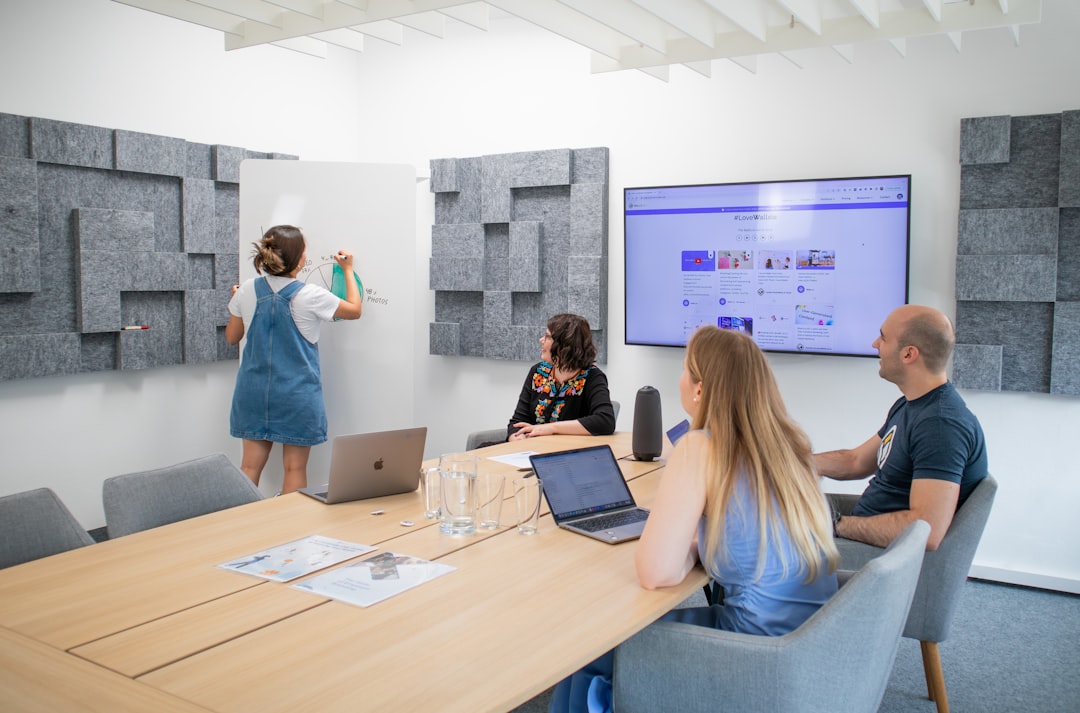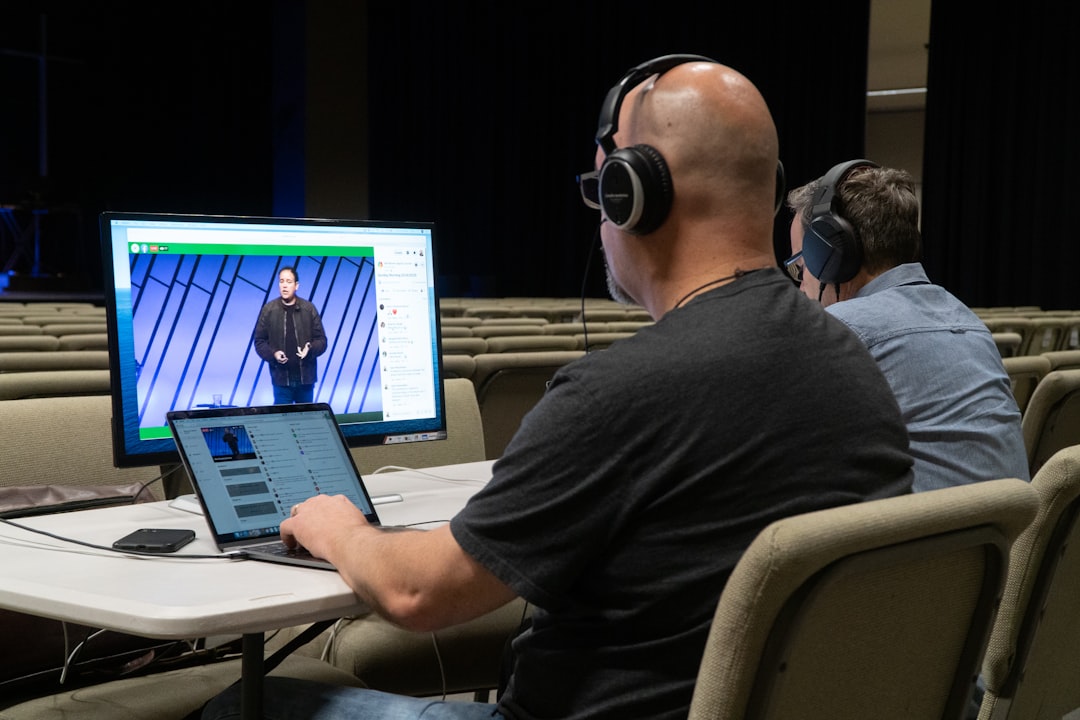

Engage prospects with a scan and streamline customer engagement with FREE QR code marketing tools by Sona – no strings attached!
Create a Free QR CodeFree consultation

No commitment

Engage prospects with a scan and streamline customer engagement with FREE QR code marketing tools by Sona – no strings attached!
Create a Free QR CodeFree consultation

No commitment
Voice over training programs are experiencing a surge in popularity as more talent, businesses, and organizations recognize the power of crisp, professional audio for content, presentations, and branding. Yet with this momentum comes a vital challenge: ensuring that every learner receives actionable, real-time feedback that translates into measurable skill growth. For many program operators, paper forms, post-session emails, and manual follow-up calls are still the default, contributing to response fatigue, low engagement, and feedback that often arrives too late to be useful. Fragmented data collection and missed touchpoints can mean high-potential students are overlooked or insights into instructor performance go untracked.
QR codes have emerged as an agile bridge between the physical world of voice acting studios and the immediate, data-rich digital realm of feedback. By delivering frictionless scan-and-respond workflows, QR codes remove barriers—no app download or login required—making it simple for both students and instructors to share and receive feedback in seconds. This accelerates learning cycles and provides programs with immediate, trackable outcomes via Sona QR’s product overview. Modern QR solutions can consolidate responses from diverse studio locations and classes, offering a unified view that reduces confusion and eliminates the inefficiencies of disconnected systems.
This guide explores how QR code solutions can power feedback collection in voice over training programs, enabling educators, operators, and marketers to connect physical learning experiences with actionable, online engagement. This practical approach unlocks better program reviews, higher retention, and closes the gaps where high-value insights or follow-up opportunities would have otherwise slipped through the cracks.

QR codes can significantly streamline feedback collection in voice over training programs by digitizing manual tasks and supporting real-time analytics. Valuable opinions often go unrecorded because students forget to fill out paper forms or do not respond to follow-up emails, leaving instructors without the guidance they need to adapt their techniques. By placing scannable codes at the right moments, programs can turn fleeting impressions into structured data that flows directly into systems of record.
Replacing analog processes with QR-enabled workflows removes friction at every step. Instead of waiting for a post-session email that may never be opened, students can scan a code on the classroom screen as the session wraps, complete a two-minute form using QR codes for Google Forms, and optionally attach a voice note right from their phone. Instructors receive aggregate visuals on what resonated and what did not, operations teams gain consistent benchmarks across sessions, and marketing can see which classes inspire the most positive sentiment.
Deploy use cases tailored to voice over training programs:
Define success metrics:
Design with intent:
Leverage tracking tools for insight:
Today’s QR code solutions can support every step of this workflow, from code creation to engagement analytics and CRM integration, ensuring that feedback data contributes directly to both student success and program growth. When QR scanning becomes a habit for staff and learners, feedback transforms from sporadic to systematic.

For voice over training providers, QR codes solve critical offline-to-online workflow gaps that have long hindered learner experience and program optimization. Classes are inherently physical, involving headphones, mics, and scripts. The reflection loop often happens later, which weakens recall and reduces participation. QR codes change the timing and the context, allowing feedback to be captured at the point of experience and transformed into structured signals.
The value extends beyond convenience. Because QR codes make every paper asset and studio surface interactive, they reduce waste and improve agility. If a feedback destination needs to change, dynamic QR links can be updated centrally without reprinting. If a program launches a new module, codes can segment responses by topic, voice genre, or instructor. This agility equips operations teams to respond quickly to student needs and to maintain a consistently high-quality experience across locations. For a broader perspective on how these technologies converge, explore this overview of voice tech and QR codes.
Concretely, think of typical materials like audition scripts, printed rubrics, classroom posters, event badges, or workshop slides. Each of these can carry a QR code that turns a passive artifact into an active feedback channel. When combined with a platform like Sona QR, every scan yields both learner value and program intelligence. For sector-specific ideas, see Sona QR’s education industry guidance.

Different QR code formats map to different program goals. Choosing the right type and destination ensures students move from scan to action with minimal friction. The most effective programs standardize on a few core formats and build workflows around them.
For voice over training, forms and web links are usually the backbone because they capture structured ratings and narrative feedback. vCards are helpful for instructor contact sharing and alumni networking. SMS or email triggers can prompt quick questions or schedule follow-ups, and app download codes can encourage continued practice with metronome or breath-control tools.
With Sona QR, you can generate these formats and manage them in one place. Dynamic codes let you update destinations without reprinting, and analytics show which formats drive the most completions. Most programs find that dynamic, form-enabled QR codes provide the best blend of flexibility, tracking, and user experience.

Growth often hides in the quiet corners of your experience where engagement is high but untracked. Students practice in booths, sit with scripts, attend guest sessions, and watch recorded lessons, yet their feedback and intent signals rarely make it into your systems. QR codes extend your program’s digital reach into these moments.
Start by auditing every physical and virtual touchpoint that matters to learning or enrollment. Identify where students dwell, reflect, or make decisions. Then add QR codes that connect these moments to a clear action such as giving feedback, requesting coaching, or exploring the next module. Over time you will build a richer picture of how learners progress and what they value most.
By instrumenting these placements, you convert anonymous engagement into measurable signals. The gains include better session design, stronger retention, and more effective promotion of advanced training paths.

Use cases that tie directly to student goals and instructor workflows deliver the fastest wins. Start with feedback and issue reporting, then add layers for alumni marketing and peer coaching. The aim is to keep each action short, clear, and connected to a specific benefit.
Begin with three foundational plays that most programs can deploy quickly. Expand as your team and students get comfortable scanning and responding. Because dynamic QR codes can be updated centrally, you can test and refine without reprinting.
Each use case triggers a specific action such as a form fill, rating, content upload, or booking request. Track completion rates and iterate on CTAs, placement, and form length. Over time you will see patterns in what prompts engagement, which can inform both pedagogy and promotion.
Every scan is a behavioral signal tied to a moment, a location, and an intent. By deploying distinct QR codes across classes, events, and materials, you automatically segment your audience based on real actions rather than assumptions. These segments can then drive targeted email, SMS, and ad campaigns that reflect where learners are in their journey. For campaign strategy, see Sona’s Playbook titled Intent-Driven Retargeting—Driving High-Impact Campaigns with First-Party Intent Signals.
For voice over training, useful audience distinctions include prospective students versus current enrollees, genre specialists versus generalists, and early-career talent versus advanced professionals. Segmenting by instructor, class type, or event attendance helps you tailor follow-up and improve conversion to advanced modules and alumni programs.
Retargeting grounded in scan behavior respects the learner’s context and improves relevance. Invite trial-class attendees to an intermediate workshop, send alumni a showcase invitation, or offer genre-specific micro-courses to students who engaged with that material.
QR codes bridge offline presence and online action across your full marketing stack. This connection turns print, events, and video into measurable channels that feed your enrollment and retention engine. When codes are embedded consistently, they knit the learner journey together, from first interest to advanced training and alumni referrals.
The key is to match placement and CTA to the medium and the moment. A code on a brochure might promise a full syllabus or an instructor reel. A code in a webinar might offer a one-minute feedback form or a discount on an advanced module. Use distinct codes for each channel so you can compare performance and budget accordingly. For broader context on incorporating QR into marketing, see how QR codes improve marketing.
A centralized platform like Sona QR helps manage all codes, monitor performance, and sync scan data with your CRM and ad platforms. With shared visibility across marketing, operations, and instruction, you can align content creation, scheduling, and promotions around what learners prove they value.
Whether you are launching your first QR initiative or scaling a program-wide rollout, a clear process ensures consistency and measurable results. The following steps are designed for voice over training programs that want to replace outdated workflows, improve learner experience, and drive tangible outcomes.
Begin with a single use case, validate that scans are flowing and data is clean, then expand to additional placements. Keep each code’s purpose simple, and use dynamic destinations so you can optimize without reprinting.
Define the campaign’s purpose and the action you want learners to take. Select a use case that aligns with a concrete outcome such as session feedback, instructor ratings, or coaching requests. For example, place a QR code on the last slide of an animation voice class that opens a two-minute survey with an option to attach a 10-second voice note.
Clarify the benefit to the scanner in your CTA and follow-up plan. If students know their feedback influences next week’s drills or unlocks a bonus script pack, completion rates rise. Document the owner, the timeline, and the success criteria so everyone knows what good looks like.
Choose dynamic codes for any destination that might change or that you want to track. Dynamic codes support editability, analytics, and UTM tagging, which are essential for optimization. Static codes are fine for stable assets like a downloadable syllabus PDF, but they limit flexibility and insight.
Match the format to the task. For ratings and comments, send to a mobile-optimized form. For quick questions, try an SMS or email pre-fill. For networking after a showcase, use a vCard. With Sona QR, you can generate and manage all formats in one dashboard.
Create a scannable, branded visual that includes a clear CTA, adequate quiet space, and a short URL fallback. Size the code for the environment, for instance 1 inch minimum for handheld materials and larger for hallway posters. Add a frame or arrow that draws the eye, and place the code at a comfortable reach or line of sight.
Test in situ from different angles, distances, and lighting conditions on both iOS and Android. Verify that the destination loads fast, that the form is short and thumb-friendly, and that the thank-you message sets expectations for next steps. Fix issues before printing or publishing widely.
Roll out QR codes where learners are most likely to notice and act. In studios, use booth walls, entry doors, and script packets. At events, print on badges and stage signage. In virtual settings, add codes to slides and overlays, and include them in course PDFs. Each channel should have its own code so performance can be compared.
Brief instructors and staff so they know when to point to the code, give the CTA aloud, and allow time for scanning. At the end of a session, a 90-second scan break can double response rates. For mailers and brochures, include a short line that states the value of scanning, such as “Scan for the full syllabus and sample lessons.”
Monitor scan volume, completion rates, and downstream actions weekly. Add UTM parameters so analytics tools can attribute traffic by source, medium, and campaign. Look for drop-off points, and test different CTAs, placements, and form lengths to improve.
Use Sona QR’s analytics to segment performance by location, instructor, and time, then act on the findings. If weekend workshops produce the most detailed feedback, schedule similar sessions. If one room’s scans lag, adjust signage or lighting. Build a simple dashboard that ties scans to enrollments, upgrades, and reviews so the team can see impact.
Training programs have long struggled to connect learner engagement to business outcomes because feedback channels were disconnected. Paper forms were lost, email links went unopened, and event interactions were anonymous. Without a clear picture of what influenced retention or upsell, teams were left guessing. QR analytics close this loop by capturing real-world intent at the source and tying it to outcomes.
A robust analytics strategy tracks scans by time, device, location, and campaign, then overlays form completions, sentiment, and subsequent actions such as bookings or purchases. Segmenting by instructor, class type, or event unlocks meaningful comparisons. The result is a feedback engine that supports better pedagogy and smarter revenue decisions.
Sona QR captures scans and behavioral context, then Sona.com helps connect those signals to pipeline and revenue through identity resolution and multi-touch attribution. This turns QR codes from convenience links into a core part of your performance strategy.
Once the basics are in place, a few best practices will increase scan rates and ROI. Focus on clarity, consistency, and follow-through. Make it easy for learners to understand the value of scanning, and ensure every scan triggers a next step that rewards their participation.
Consider your most common media and learning contexts. For voice programs, that often means scripts, slides, booth posters, mailers, and event signage. Use a distinct code for each asset so you can see what works and refine accordingly. Encourage instructors to model the behavior by scanning and completing a sample form in front of the class. Explore placement ideas in Sona QR’s use case library.
You can generate and track your first QR codes for free with Sona QR. Start creating QR codes for free.
Voice over training programs have long operated with partial visibility into real engagement, risking missed feedback, lost up- and cross-sell opportunities, and the frustration of fragmented records. By weaving QR codes into every core workflow, programs empower staff and students to build a culture of continuous improvement with data that arrives in time to matter. When every room, script, and event becomes a gateway to action, feedback transforms from a chore into a routine that drives quality.
QR codes deliver a transformative return for voice over training programs, connecting every student interaction to an actionable digital outcome. With dynamic codes, clear CTAs, and an integrated analytics stack, teams can move from anecdote to insight, from guesswork to attribution. Platforms like Sona QR and Sona.com make it simple to launch, measure, and scale, so you can convert offline interest into online action and measurable growth. When feedback flows into a unified system and every engagement is trackable, the path from scan to skill advancement, retention, and revenue becomes clear.
QR codes have revolutionized voice over training programs by transforming how instructors gather and analyze learner feedback. Beyond simplifying the feedback process, they enable real-time insights that enhance training effectiveness, personalize learning experiences, and drive continuous improvement. Imagine instantly knowing which exercises resonate most or where learners struggle—empowering you to tailor your program for maximum impact.
With Sona QR, creating dynamic, trackable QR codes is effortless. Update feedback forms on the fly without reprinting materials, monitor engagement in real time, and connect every scan to actionable data that elevates your training outcomes. No more guesswork—just clear, measurable results that refine your voice over training programs with precision.
Start for free with Sona QR today and turn every scan into valuable feedback, stronger learner connections, and a more successful training journey.
QR codes streamline feedback collection by enabling instant, app-free scanning that connects physical learning environments with digital feedback, improving response rates, engagement, and actionable insights.
Programs can replace paper surveys and delayed email follow-ups with QR codes placed in studios and class materials, allowing students to submit immediate, structured feedback including ratings, comments, and voice notes.
Useful QR code formats include web links to mobile surveys, forms for session feedback, vCards for contact sharing, SMS or email triggers for follow-up, app download links, and Wi-Fi access codes for workshops.
QR codes capture real-time scan data linked to sessions, locations, and instructors, enabling programs to monitor response rates, sentiment, and downstream actions like enrollments and coaching sign-ups through integrated dashboards.
Place QR codes on classroom slides, studio booths, exit doors, printed scripts, event badges, online lesson slides, and promotional materials to capture feedback and engagement at key learner touchpoints.
QR codes connect offline materials like brochures, flyers, and event signage to online resources and registration forms, enabling tracking of campaign performance and targeted follow-up based on scan behavior.
Start by selecting a clear use case, choose dynamic QR code types, design and test the codes for usability, deploy them across high-impact channels, and continuously track and optimize based on analytics.
Yes, platforms like Sona QR offer free QR code generation and management with features such as dynamic links, analytics, and CRM integration to support voice over training programs.
Successful voice over careers require skills in mic technique, breath control, articulation, pacing, and script interpretation, which can be developed through targeted feedback and coaching enabled by effective training programs.
Programs measure success by tracking feedback response rates, time-to-feedback, sentiment analysis, and downstream actions such as enrollments and referrals, allowing iterative improvements to curriculum and operations.
Use Sona QR's trackable codes to improve customer acquisition and engagement today.
Create Your FREE Trackable QR Code in SecondsJoin results-focused teams combining Sona Platform automation with advanced Google Ads strategies to scale lead generation

Connect your existing CRM

Free Account Enrichment

No setup fees
No commitment required

Free consultation

Get a custom Google Ads roadmap for your business






Launch campaigns that generate qualified leads in 30 days or less.
